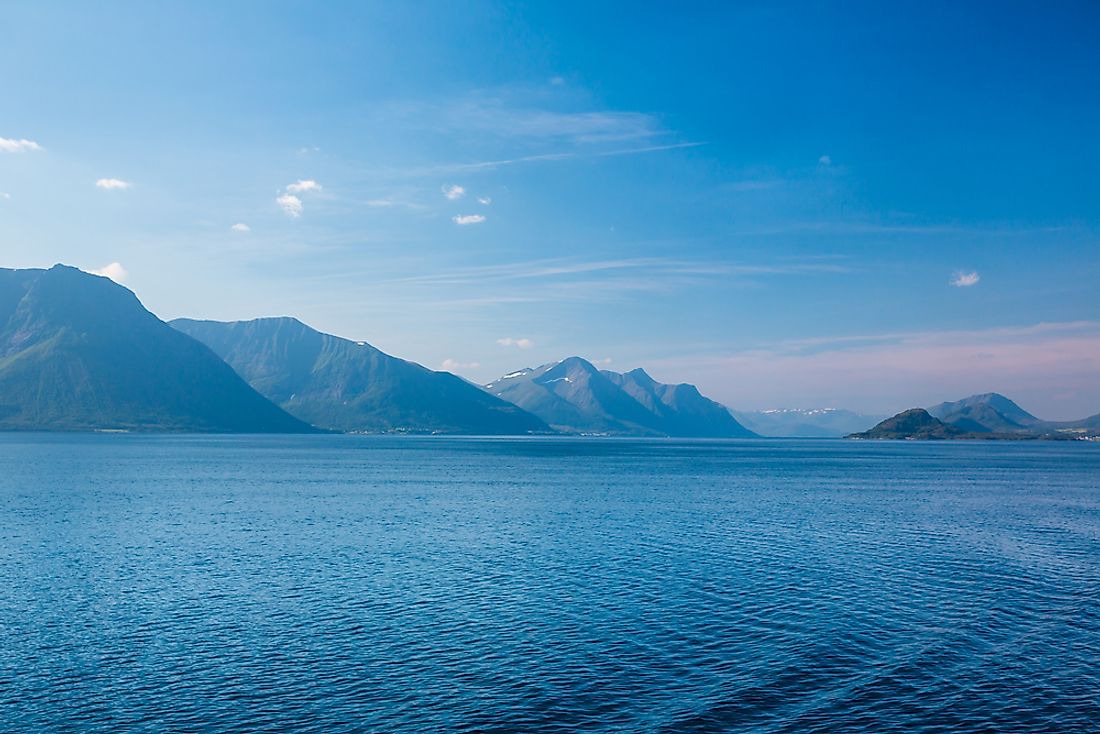Where are the Nordic Seas?

The Nordic Seas comprise of the Norwegian Sea, Greenland Sea, and Iceland Sea. The water bodies are situated to the north and south of Iceland and Svalbard respectively. Nordic Seas acts as a mixing cauldron for water entering from both the North Pacific and the Arctic Ocean. The region has dense waters that create the densest area in the North Atlantic Deep Water. The Nordic seas also connect the deep waters of the Arctic Ocean to the other oceans of the world. Nordic Seas account for less than 1% of the oceans of the world.
Overview Of The Nordic Seas
The Nordic Seas are located west of Norway and east of Greenland. The seas are bound by the Barents Sea, Fram of Strait, and Spitsbergen. The Greenland Sea borders Greenland to the west, Iceland to the south, and Svalbard Archipelago to the east. It is often included as part of the Arctic Ocean or the Atlantic Ocean. However, the general usage of the term “Arctic Ocean” does not include the Greenland Sea. The Greenland Sea is characterized by Arctic climate with temperatures rarely going past 0 degrees Celsius. The sea is an important breeding ground of seals and has been used as seal hunting ground for over 200 years.
The Norwegian Sea is situated on the northwestern side of Norway between the North Sea and the Greenland Sea, adjoining the Barents Sea to the northeast. It is separated from the Atlantic Ocean by a ridge between Iceland and Faroe Island. The sea was formed approximately 250 million years ago when Eurasia and the North American plates started to move apart. The Norwegian Sea has plenty of oil and natural gas deposit at the bottom.
Water Masses Surrounding The Nordic Seas
The masses of water surrounding the Nordic Seas always change depending on the atmosphere-ocean variation fluxes. The three seas are sandwiched between the Arctic Ocean and North Atlantic, both of which have waters with variable conditions. The sea waters have several characteristics, including two layers of water on the surface and three surfaces of both intermediate and deep waters. The waters on the surface include the Atlantic and Polar Surface waters. The Atlantic water is warmer and saline while the Polar surface water is cooler and fresh. The difference in the two surface waters influences the Scandinavian climate.
The three intermediate waters are the remnants of the Atlantic water from East Greenland Current, Arctic Intermediate Water, and the upper Polar Deep Water. The deep waters are the Greenland Sea, Norwegian Sea, and Arctic Ocean Deep Water. The intermediate waters and the deep waters have varying temperatures and levels of salinity.
Significance Of Nordic Seas
The Nordic Seas influence the climatic realms of North Atlantic. It has strong positive sea surface and surface air temperature. The region is important for water mass modification and formation and an important transport route for freshwater and heat between North Atlantic and the Arctic Ocean. The Nordic Seas, particularly the Greenland Sea, is an important habitat and breeding ground for seals.











